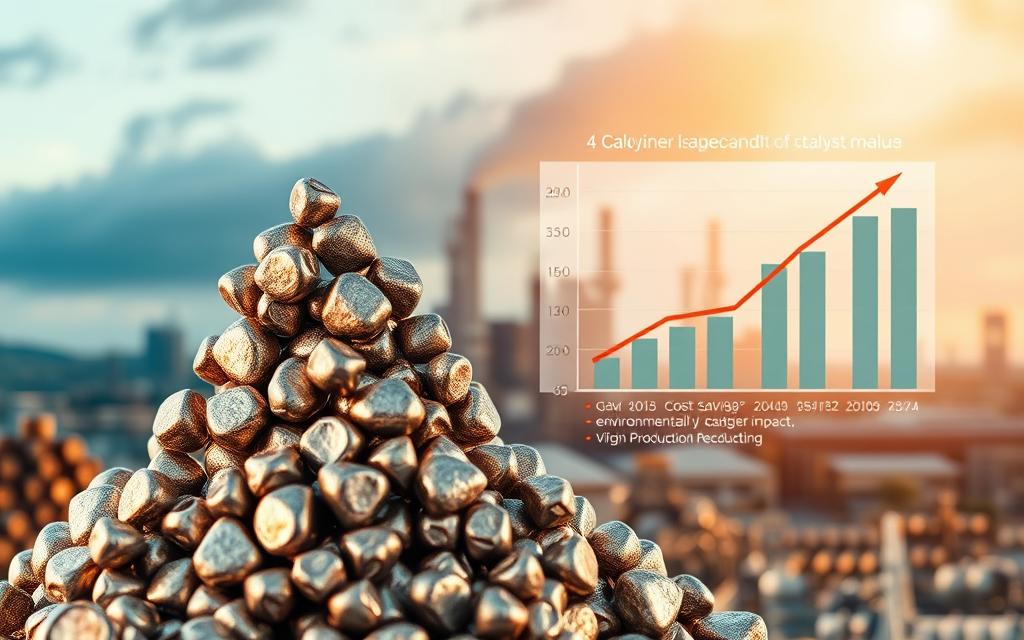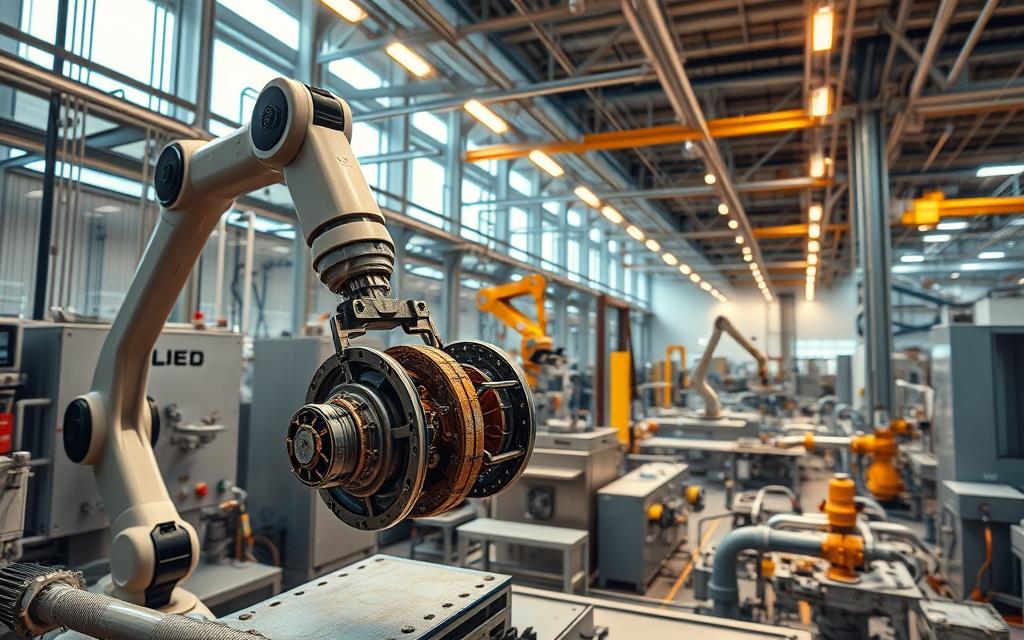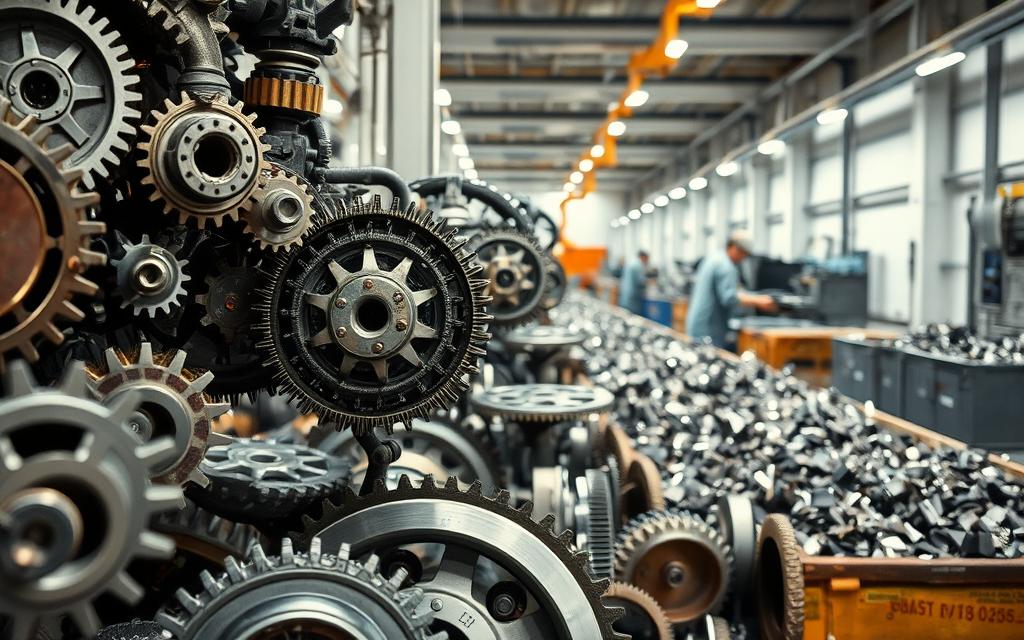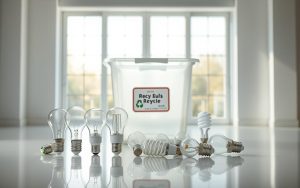Catalysts play a vital role in industries like petroleum refining and chemical manufacturing. These materials speed up reactions without being consumed, making them indispensable. However, their lifecycle doesn’t end after use. Many contain valuable metals such as molybdenum, nickel, cobalt, platinum, and palladium.
Recycling these components offers significant benefits. It reduces landfill waste and preserves natural resources. Recovering high-value metals also supports industrial applications, creating a circular economy. For example, molybdenum alone can fetch up to $21 per pound when recycled.
Beyond economic gains, recycling aligns with corporate ESG goals and regulatory compliance. It’s a step toward a cleaner environment and sustainable practices. As industries evolve, the focus on recycling catalysts continues to grow, highlighting its importance in modern manufacturing.
What Are Catalysts and Why Are They Important?
From fuel production to pharmaceuticals, catalysts are the backbone of countless applications. These substances accelerate chemical reactions without being consumed, making them vital in modern industries. Their ability to enhance efficiency and reduce energy consumption has transformed manufacturing processes worldwide.
In industries like petroleum refining, catalysts play a critical role. They enable processes such as hydrotreating, hydrocracking, and isomerization. For example, cobalt-molybdenum (CoMo) and nickel-molybdenum (NiMo) catalysts are essential for sulfur removal in ultra-low sulfur diesel (ULSD) production.
Hydrogenation processes also rely heavily on these materials. They convert raw materials into valuable products like gasoline, diesel, and jet fuel. Additionally, platinum (Pt) and palladium (Pd) catalysts are indispensable in pharmaceutical applications, ensuring precise chemical transformations.
Energy efficiency is another key benefit. Over 90% of chemical processes depend on catalysts to reduce energy consumption and improve output. Specific types, such as DHT, NHT, and hydrocracking catalysts, are tailored for unique industrial needs.
Despite their durability, these materials degrade over time. Typical replacement cycles range from three to five years, depending on usage. This degradation underscores the importance of understanding their lifecycle and potential for recycling.
Are Catalysts Recyclable? Understanding the Basics
Modern industries are increasingly focusing on sustainable practices, including material recovery. One key area is the recycling of industrial materials, particularly those containing valuable metals. This process not only reduces waste but also conserves resources and supports a circular economy.
How Catalyst Recycling Works
The recycling of industrial materials involves a systematic process to recover valuable components. For catalysts, this typically follows five key steps:
- Collection: Used catalysts are gathered from industrial sites.
- Analysis: Samples are tested to determine metal content and composition.
- Metal Recovery: Metals like platinum, palladium, and molybdenum are extracted.
- Purification: Recovered metals are refined to remove impurities.
- Reuse: Purified metals are reintroduced into manufacturing processes.

Two primary methods are used for metal extraction: pyrometallurgical and hydrometallurgical techniques. Traditional smelting involves high temperatures to separate metals, while modern hydrometallurgical methods use chemical solutions for extraction. The latter is often preferred for its efficiency and lower environmental impact.
Companies like BASF have set industry standards with their ISO 17025 accredited sampling and assaying methods. Their lot witnessing program ensures 99.9% assay accuracy, making the process highly reliable. Recovered metals find applications in alloy steel, electronics, and even new catalyst production.
| Method | Process | Advantages |
|---|---|---|
| Traditional Smelting | High-temperature separation | Effective for bulk metal recovery |
| Hydrometallurgical | Chemical extraction | Energy-efficient, eco-friendly |
According to the EPA, recycling metals saves up to 85% of the energy compared to producing virgin metals. This makes catalyst recycling a critical component of sustainable industrial practices.
Types of Catalysts That Can Be Recycled
The recovery of metals from industrial materials supports both economic and environmental goals. Various types of industrial and automotive catalysts can be processed to extract valuable components. These include refinery catalysts like hydrotreating (CoMo), reforming (NiO), and shift (CuZn) units.
Precious metal catalysts, such as those containing platinum and palladium, are also highly recyclable. These materials are commonly used in isomerization and selective hydrogenation units (SHU). The high value of these metals makes their recovery economically viable.
Common Metals Recovered from Catalysts
Nine key metals are typically recovered during the catalyst recycling process: molybdenum (Mo), tungsten (W), nickel (Ni), cobalt (Co), copper (Cu), zinc (Zn), vanadium (V), platinum (Pt), and palladium (Pd). Each of these metals has unique applications and market values.
For example, platinum prices range from $900 to $1,200 per ounce, while palladium can fetch between $1,000 and $1,400 per ounce. BASF, a leader in this field, achieves a global recovery rate of 98.5% for platinum-group metals, setting a high industry standard.
| Metal | Applications | Market Value (per ounce) |
|---|---|---|
| Platinum (Pt) | Isomerization, electronics | $900 – $1,200 |
| Palladium (Pd) | Selective hydrogenation, automotive | $1,000 – $1,400 |
| Molybdenum (Mo) | Alloy steel, chemical catalysts | $21 per pound |
Non-metallic catalysts present unique challenges in recycling. However, innovative solutions are emerging to address these issues, ensuring that even complex materials can be reused effectively. This approach not only conserves resources but also aligns with global sustainability goals.
Economic Benefits of Catalyst Recycling
Recycling industrial materials offers significant financial advantages. By recovering valuable metals like molybdenum and nickel, businesses can offset operational costs and generate revenue. This process not only reduces waste but also enhances efficiency across various industries.

Landfill disposal costs range from $150 to $300 per ton, while metal recovery can yield substantial profits. For example, molybdenum fetches $21 per pound, and nickel commands $10 per pound. These returns make catalyst recycling a financially viable option for businesses.
Cost Recovery and Revenue Generation
Recycling refinery catalyst batches demonstrates clear ROI. Recovered metals reduce the need for fresh materials, cutting costs by 15-25%. This translates to significant savings for companies while supporting sustainable practices.
BASF’s services further enhance financial benefits. Their 24/7 trading desk and hedging options provide flexibility for businesses. Revenue-sharing models and prepayment options ensure steady cash flow, making catalyst recycling even more attractive.
Closed-loop material flows also stabilize supply chains. By reintroducing recovered metals into production, companies reduce dependency on raw material imports. This approach not only improves efficiency but also strengthens long-term business resilience.
Environmental Benefits of Recycling Catalysts
Recycling industrial materials significantly impacts the environment by reducing waste and conserving natural resources. This process not only minimizes landfill use but also prevents harmful substances from leaching into soil and water. For example, vanadium, a common component in catalysts, can cause toxification if not properly managed.

One ton of recycled catalyst saves up to 30,000 liters of water, highlighting the resource conservation potential. Additionally, recycling reduces the need for mining by 40% for platinum-group metals (PGMs). This cuts down on the environmental damage caused by extraction processes.
Reducing Pollution and Conserving Resources
Recycling catalysts leads to a 75% reduction in CO2 emissions compared to primary production. This aligns with global efforts to combat climate change. By recovering metals like molybdenum and nickel, industries can reduce their carbon footprint significantly.
Lifecycle analysis shows that metal recovery saves 92% of the energy required for producing virgin metals. This energy efficiency supports the UN Sustainable Development Goals (SDG 12: Responsible Consumption). The University of Illinois’ zero-waste manufacturing vision further underscores the importance of this practice.
| Benefit | Impact |
|---|---|
| Water Conservation | 30,000 liters saved per ton |
| Energy Reduction | 92% less energy used |
| Emissions Reduction | 75% lower CO2 emissions |
For more insights into how catalyst recycling reduces pollution and conserves resources, explore detailed case studies and industry practices. This approach not only protects the environment but also supports sustainable industrial growth.
Innovative Techniques in Catalyst Recycling
Innovative approaches are transforming how industries handle material recovery. Among these, electrochemical recycling stands out as a breakthrough. This technique offers higher efficiency and lower costs compared to traditional methods.

Electrochemical Recycling of Homogeneous Catalysts
Homogeneous catalysts pose unique challenges, especially in pharmaceutical manufacturing. Their complex chemistry makes separation and recovery difficult. Traditional thermal processes often fall short in achieving high recovery rates.
Dr. Xiao Su’s redox-electrode method has revolutionized this field. Developed at UIUC, this technique achieves a 97% recovery rate. Funded by the NSF (CBET Award 1942971), it uses electrochemical separation to extract valuable metals.
Compared to thermal recovery, this method reduces costs by 30%. It also minimizes environmental impact, making it a sustainable choice. A case study demonstrated the 15-cycle reuse of platinum catalysts, showcasing its long-term viability.
Future applications include rare earth metal recovery, expanding its potential. This advancement aligns with global efforts to improve industrial processes and reduce waste. As industries adopt these innovations, the benefits will continue to grow.
Conclusion
The global shift toward sustainable industrial practices has made catalyst recycling a priority. This process delivers economic gains, environmental protection, and technological advancements. Recovering valuable metals reduces costs and supports circular economy initiatives.
Industry trends show a 12% CAGR in the catalyst recycling market. Regulatory shifts in the EU and California are pushing mandatory recycling, making it essential for refinery operators to audit waste streams. Advanced processes ensure efficient recovery and reuse of materials.
For tailored services, partnering with experts like BASF can optimize recovery efforts. Their 150+ years of experience in metal recovery ensures reliable and sustainable solutions. Take the next step toward sustainability—contact BASF today for custom recovery plans.







